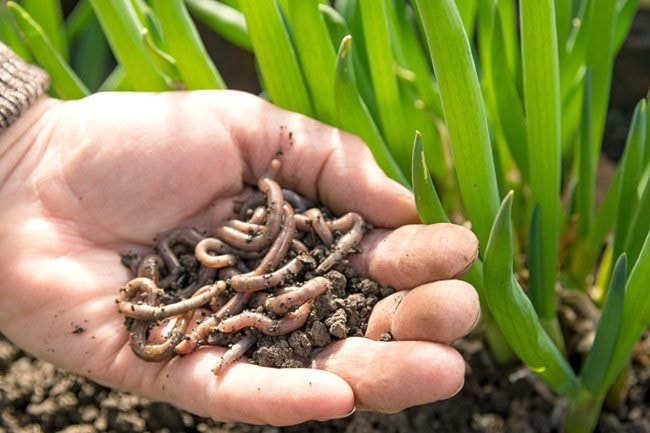Tiny Europeans are making their way to the North.
They’re potentially dangerous. But not to worry, they move pretty slowly on their own.
Researchers with the University of Alberta are studying the spread of non-native earthworms in the boreal forest of northern Alberta. They’re asking Yukoners to keep their eyes peeled as well.
The crawlers have developed a reputation of being a gardener’s best friend. While that may be the case in some situations, the worms also have a potentially dark, dirty, squishy secret.
While digging around in the dirt, earthworms mix up a forest’s leaf litter layer. But there are plants that depend on that layer to grow, explains researcher Erin Cameron with the Alberta Worm Invasion Project.
Formerly earthworm-free hardwood forests of the Great Lakes Region have been invaded. One sensitive fern in the sugar maple forests in Minnesota has been completely wiped out thanks to the worms.
Other plants and ground-nesting birds have also seen a decline in areas where earthworms are found.
Cameron is studying the effect on forests in Northern Alberta.
There, damage is not as advanced as you might find south of the border. But research does show early changes.
“The invasions in the boreal, these species have probably arrived much more recently,” she said. “So we do see changes in the leaf litter, they do consume the leaf litter in the same way.”
Most earthworms are not native to Canada. Nearly all of them died out about 10,000 years ago during the last ice age.
“There is a belief that they arrived in North America with the first European settlers on boats and with soil and plants,” Cameron said.
The Yukon does have a few native species of worm, but most of the worms we find are members of the European invasion.
If worms were left to their own devices to wiggle their way across the country, we wouldn’t have to worry too much.
On their own they can spread 10 to 20 metres a year.
But the fact is that they’re not moving on their own. They’re hitching rides on car tires or in anglers’ tackle boxes.
“We found that they were much more common along the road and at the boat launches. Which suggests that humans are introducing them,” Cameron said.
While most of their work is Alberta-based, Cameron said the invasion project is interested in worms’ northern trajectory.
Like many other places, exotic earthworms have been found in the Yukon, mainly near Whitehorse and other areas where humans are plentiful.
Even when the Yukon’s winter dips into temperatures that make humans uncomfortable, some breeds of worms have a freeze tolerance that allows them to survive through the winter and thaw when the sun comes out.
In the Yukon, the title of local worm specialist would likely fall to Bruce Bennett, the co-ordinator for the Yukon Conservation Data Centre.
He said it’s common to find non-native worms all around populated areas in the territory, including everywhere from Riverdale to Haines Junction to the islands in the Yukon River.
But the Yukon has not officially labelled any of the species as invasive.
“It would have to show that it causes either environmental or ecological harm. The presence of non-native worms is something to be aware of and to track, to see if they would qualify,” he said.
Bennett says he’ll be following the University of Alberta study and is most interested in watching just how these worms are being moved around the country.
“In places such as Whitehorse, if people are getting their ATVs muddy in Whitehorse and then taking them into the backcountry, is that a vector for moving these things around?” he asked.
In the Yukon, he said, we tend not to have that deep layer where the worms would do damage.
“You tip over a tree and you’ve got about a quarter inch of soil… We don’t have deep soil,” he said. “The threat of these worms in the Yukon is probably much smaller, which is why I hesitate to call them invasive.”
Still, having data available on worms and species movement is important in case it is ever needed, he said.
If anyone finds a worm, especially if it’s found away from town, Bennett said he’s more than willing to help Yukoners identify the discovery.
Very few people can identify a worm species at first glance, he said. The different breeds are only distinguishable by the little hairs, or cilia, found along their bodies.
The University of Alberta researchers have created an online Worm Tracker App where the public can upload photos of worms along with information on where they were found.
Contact Ashley Joannou at
ashleyj@yukon-news.com
